VC++怎么用
Posted
tags:
篇首语:本文由小常识网(cha138.com)小编为大家整理,主要介绍了VC++怎么用相关的知识,希望对你有一定的参考价值。
刚开始学习C语言,什么都不懂哦,下了个VC++来练练,可是不知道要怎么用,从创建文件到调试过程都不是很清楚,希望有人能说说具体过程,谢谢
1、打开VC6.0++,选择文件--新建。
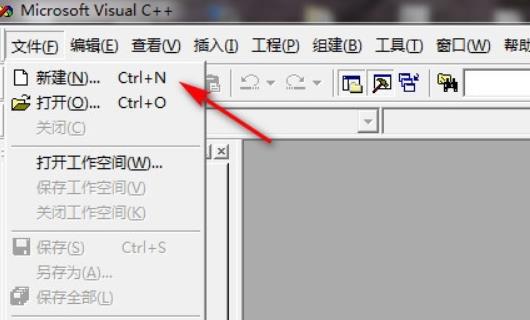
2、新建一个控制台应用工程,命名为demo。
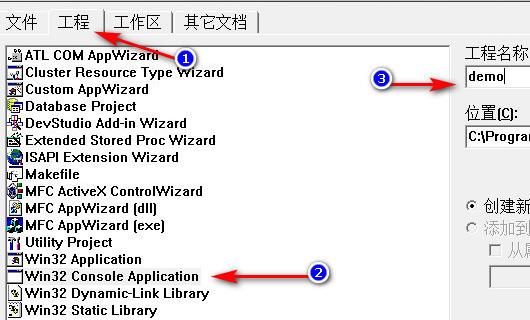
3、选择一个空的工程。

4、新建工程完毕后,再次新建。
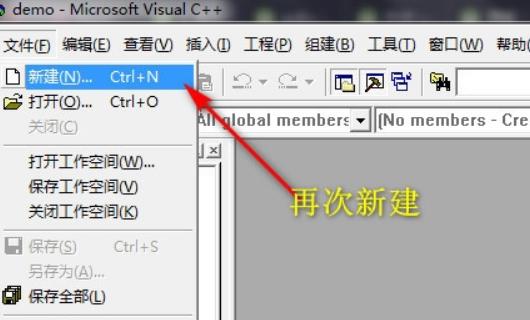
5、此次,新建一个C++源文件。
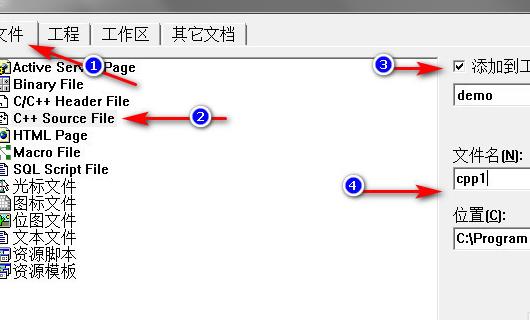
6、键入一段简单的C程序。
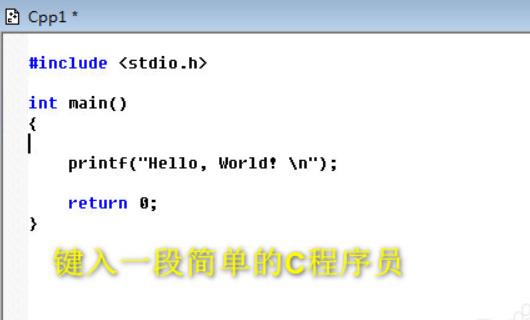
7、编译运行。
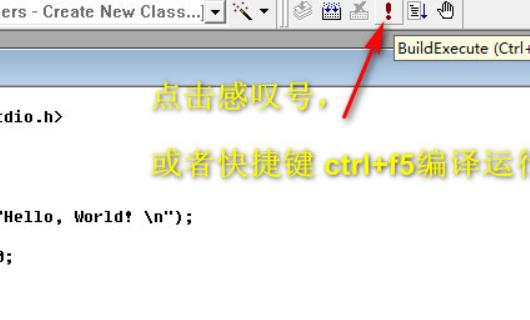
8、运行的效果如图。
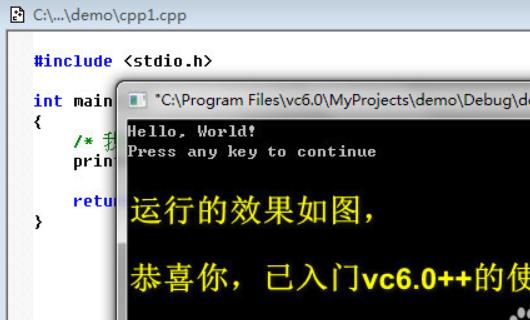
创天中文VC6.0 为例
文件--->新建--->工程--->选择 win32 console application
然后 输入一个 名字 最好是 英文的 ----> 确定--->选择 一个 A“hello world”app ---->完成 ---》确定-
在 Fileview 工具栏 中找到 XXX.cpp (XXX代表你刚才起的名字)打开 就看到一个 标准 C 的 例子
点击 一个 ! 感叹号 表示 编译 生成 程序 F5 调试 Ctrl+F5 是执行本回答被提问者采纳 参考技术B Microsoft Visual C++,(简称Visual C++、MSVC、VC++或VC)是Microsoft公司推出的开发Win32环境程序,面向对象的可视化集成编程系统。它不但具有程序框架自动生成、灵活方便的类管理、代码编写和界面设计集成交互操作、可开发多种程序等优点,而且通过简单的设置就可使其生成的程序框架支持数据库接口、OLE2,WinSock网络、3D控制界面。
它以拥有“语法高亮”,IntelliSense(自动完成功能)以及高级除错功能而著称。比如,它允许用户进行远程调试,单步执行等。还有允许用户在调试期间重新编译被修改的代码,而不必重新启动正在调试的程序。其编译及建置系统以预编译头文件、最小重建功能及累加连结著称。这些特征明显缩短程式编辑、编译及连结花费的时间,在大型软件计划上尤其显著。
用法:
1打开VC++6.0
2按左上角菜单栏的“文件”-->“新建”
3在左边的列表中选择“Win32 Console Application”,即win32控制台工程,控制台就类似windows中的cmd窗口,刚开始编程,选择创建这个工程就可以了。在右边输入工程名称,我在这里输入“FirstProgram”,位置选择一个存放该工程的文件夹,如果不放在默认的路径下,则点击右边的那个显示为“...”的按钮,然后自定义选择路径。
4然后点击确定,在接下来出现的对话框中选择“一个空工程”,点击完成即可,在后续的出现的窗口中点击“确定”。
5这个时候一个空工程就创建完成了,我们的源代码文件将包含在这个工程中。我们现在开始创建源代码文件,点击软件左上角的“文件”-->“新建”,然后出现刚才见到过的对话框,先选择上面标签中的“文件”,然后再选择下面列表中的“C++ Source File”,文件名输入hello.cpp,然后点击“确定”。
6确定完后,右边的编辑区就会自动打开空白的hello.cpp文件,左边的工作区也可以看到整个工程的组织结构。
7接下来我们写一个简单的程序,在屏幕上显示“hello world!”,最经典的程序
#include<iostream>
using namespace std;
int main()
cout<<"hello world!\n";
return 0;
8然后按编辑区上方的按钮进行编译、链接,然后执行。 参考技术C 不同的编译器的使用方法不同,你最后买本书,好好系统的学习一下
请问,谁知道VC中的SetTimer怎么用?
rt.能不能说的详细些.
1. SetTimer ---The SetTimer function creates a timer with the specified time-out value.(这个函数创建一个指定时间值的定时器)
2.SetTimer原型:(摘于MSDN)
UINT_PTR SetTimer(
HWND hWnd, // handle to window(与那个窗口建立联系)
UINT_PTR nIDEvent, // timer identifier(该定时器的标志)
UINT uElapse, // time-out value(触发时间)
TIMERPROC lpTimerFunc // timer procedure(回调函数,若NULL则发WM_TIMER消息)
);
3.细讲定时器:
第一个参数:1、NULL,则第二个参数随之被忽视
2、窗口句柄,则与该窗口建立联系,会向该窗口发送消息(当第四个参数为NULL)
第二个参数:窗口的标志,如果创建了多个定时器,如果标志一样,那么系统会采用标志最高的那位。(也就是给每一个定时器取个名字,用于系统分别)
第三个参数:触发时间
第四个参数:如果NULL则向建立窗口的函数发送WM_TIMIER消息,如果指定函数,由系统自动调用该回调函数
回调函数原型:
UINT SetTimer
(
HWND hWnd,
UINT nIDEvent,
UINT uElapse,
TIMERPROC lpTimerFunc
); 参考技术A 嗯,SetTimer 这个函数嘛
它是用来实现VC,VB中托管代码程序中的 时钟控件的的功能的
哈哈,它不像楼上说的什么,设置系统的时间
看哈,我来教你
BOOL CMy121Dlg::OnInitDialog()
......
SetTimer(0,100,NULL);
.......
我添加了这个函数在初使化的函数里
这个函数的意义是
SetTimer(
参数一:每个周期触发的事件代号,数字形,如 1 为事件一
参数二:发生这个事件的周期
参数三:每发生这个事件时,要执行的函数
)
每发生一次事件,这个函数会向窗口发送一个WM_TIMER 消息,这个消息的WPARAM 参数就是 参数一 :)
可以在消息映射里加入代码来周期执行某件事
我只是介绍了这个函数的用法,有关其它的,具体的是例,你可以加我QQ:1125591 我可以教你,反正署假无聊,不过过了署假,就没时间了,高三了,要好好读书了 参考技术B 函数名: settime
功 能: 设置系统时间
用 法: void settime(struct time *timep);
程序例:
#include <stdio.h>
#include <dos.h>
int main(void)
struct time t;
gettime(&t);
printf("The current minute is: %d\n", t.ti_min);
printf("The current hour is: %d\n", t.ti_hour);
printf("The current hundredth of a second is: %d\n", t.ti_hund);
printf("The current second is: %d\n", t.ti_sec);
/* Add one to the minutes struct element and then call settime */
t.ti_min++;
settime(&t);
return 0;
参考技术C MSDN的详细说明,看不懂去查字典
SetTimer Function
--------------------------------------------------------------------------------
The SetTimer function creates a timer with the specified time-out value.
Syntax
UINT_PTR SetTimer( HWND hWnd,
UINT_PTR nIDEvent,
UINT uElapse,
TIMERPROC lpTimerFunc
);
Parameters
hWnd
[in] Handle to the window to be associated with the timer. This window must be owned by the calling thread. If this parameter is NULL, no window is associated with the timer and the nIDEvent parameter is ignored.
nIDEvent
[in] Specifies a nonzero timer identifier. If the hWnd parameter is NULL, this parameter is ignored. If the hWnd parameter is not NULL and the window specified by hWnd already has a timer with the value nIDEvent, then the existing timer is replaced by the new timer. When SetTimer replaces a timer, the timer is reset. Therefore, a message will be sent after the current time-out value elapses, but the previously set time-out value is ignored.
uElapse
[in] Specifies the time-out value, in milliseconds.
Windows NT/2000/XP: If uElapse is greater than 0x7fffffff, the timeout is set to 1.
Windows 2000/XP: If uElapse is less than 10, the timeout is set to 10.
Windows Server 2003: If uElapse is greater than 0x7fffffff, the timeout is set to 0x7fffffff.
lpTimerFunc
[in] Pointer to the function to be notified when the time-out value elapses. For more information about the function, see TimerProc. If lpTimerFunc is NULL, the system posts a WM_TIMER message to the application queue. The hwnd member of the message's MSG structure contains the value of the hWnd parameter.
Return Value
If the function succeeds and the hWnd parameter is NULL, the return value is an integer identifying the new timer. An application can pass this value to the KillTimer function to destroy the timer.
If the function succeeds and the hWnd parameter is not NULL, then the return value is a nonzero integer. An application can pass the value of the nIDEvent parameter to the KillTimer function to destroy the timer.
If the function fails to create a timer, the return value is zero. To get extended error information, call GetLastError.
Remarks
An application can process WM_TIMER messages by including a WM_TIMER case statement in the window procedure or by specifying a TimerProc callback function when creating the timer. When you specify a TimerProc callback function, the default window procedure calls the callback function when it processes WM_TIMER. Therefore, you need to dispatch messages in the calling thread, even when you use TimerProc instead of processing WM_TIMER.
The wParam parameter of the WM_TIMER message contains the value of the nIDEvent parameter.
The timer identifier, nIDEvent, is specific to the associated window. Another window can have its own timer which has the same identifier as a timer owned by another window. The timers are distinct.
SetTimer can reuse timer IDs in the case where hWnd is NULL.
Example
For an example, see Creating a Timer.
Function Information
Header Declared in Winuser.h, include Windows.h
Import library User32.lib
Minimum operating systems Windows 95, Windows NT 3.1
最简单的使用方法
SetTimer( hWnd, 1, 1000, NULL);
定义一个一秒的定时器(1000 就是一秒,100就是0.1秒),NULL比表示不使用函数过程,相应WM_TIMER 消息。 hWnd 为窗口的句柄,此窗体接受WM_TIMER 消息. 也就是说你的要没一秒重运行的东西放到这个消息的过程里就行了。
(
例如
…………
case WM_TIMER : //假如这是一个消息循环处理过程。。
MessageBox(hWnd,…………); //没秒钟出来一个提示框
break;
)
1 为定时器标号,用于不需要定时器时调用 KillTimer释放。
以上是关于VC++怎么用的主要内容,如果未能解决你的问题,请参考以下文章